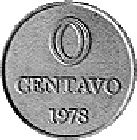Zero symbolizes nothing. It presents itself as the cornerstone of mathematics, mute protagonist of our arithmetical system.
The idea of zero developed in India starting in the 5th century B.C. There various religions accepted the creation of the world starting from nothing. The Hindus demonstrated that when you add it to any number it’s unchanged, while if you combine it using multiplication, the result is null. Later they tried to use it as a divisor and the admired the appearance of infinity. The Arabs transmitted this mathematical wisdom to Europe with the expansion of Islam. The Jews also incorporated it into the Cabala, their mystical tradition, to create numerology.[1]
In the Cuban school, a child acquires the notion of the concept of zero in first grade. From a young age he knows how to recite the numbers up to great quantities but the concept of quantity and cardinal notion is usually acquired during the early years of primary school. So the concept of zero appears in the resolution of concrete operations of addition and subtraction where the same represents the absence “of what one is going to share;” eg: I have a box of 5 candies and Pedro ate 5. How many are left?[2]
In the mathematics textbook of first grade (Edited by Pueblo and Educacion. 8th edition, Cuba 2010) the natural numbers from 1-10 appear on page 11. Starting from page 54, the number 0 appears on the number line.
During the teaching of preschool, an activity that could be used to introduce the concept of zero is to give each little one a small box of objects. Mention to them that they are going to start with zero and ask them to signal the quantity, that is to say, that they take all the objects out of the box. It is recommended to write on the board the number 0, at the same time reminding that them that we start from this number and in this way constructing learning. Instead of saying 1, 2, 3, 4,…once the toddler knows the abstract concept of number, it’s time to teach him to count: 0, 1, 2, 3, 4…. This way of teaching facilitates the concept of the number line that will be used later in the first grade of elementary school.
[1] Loria, Gino, Historia Sucinta de la Matematica, 1932
[2] Monaco Nancy I., El número cero ¿la nada matematica?, Buenos Aires, 2009
8 August 2013

